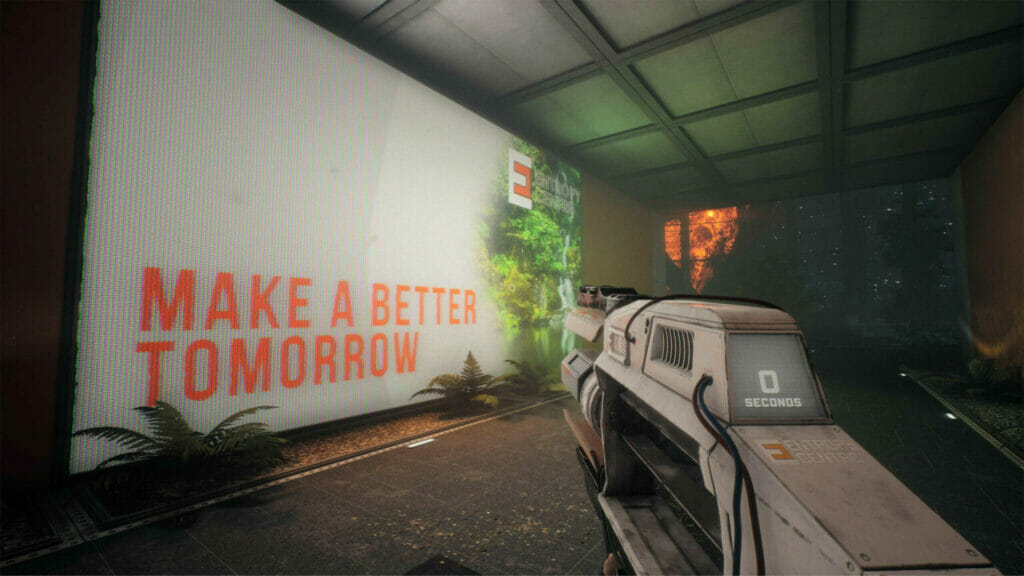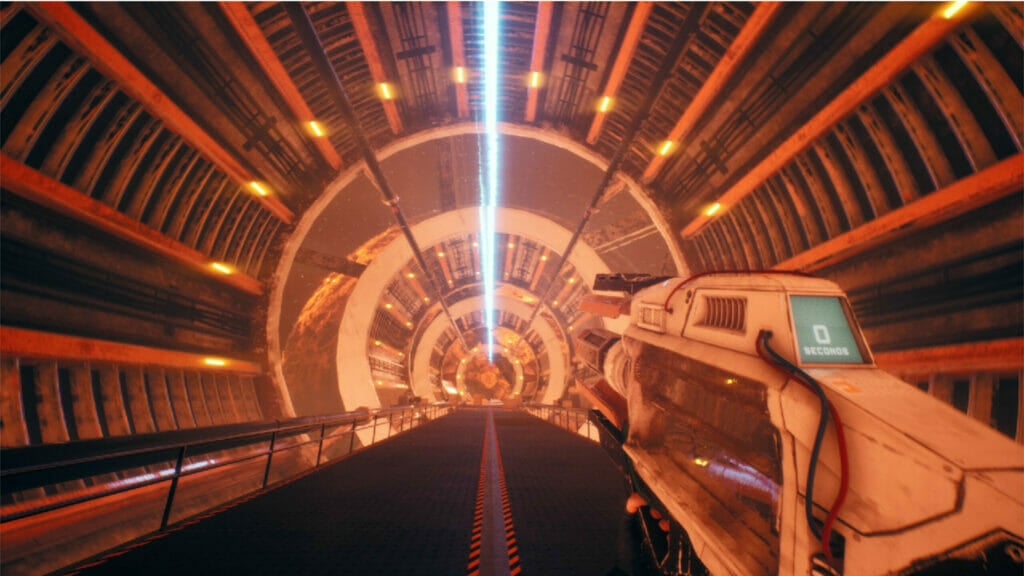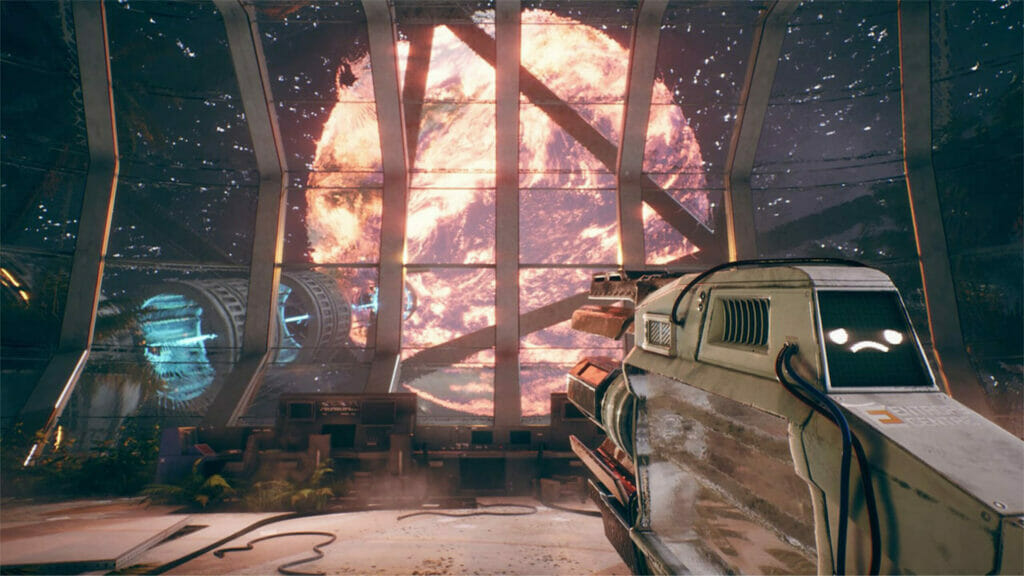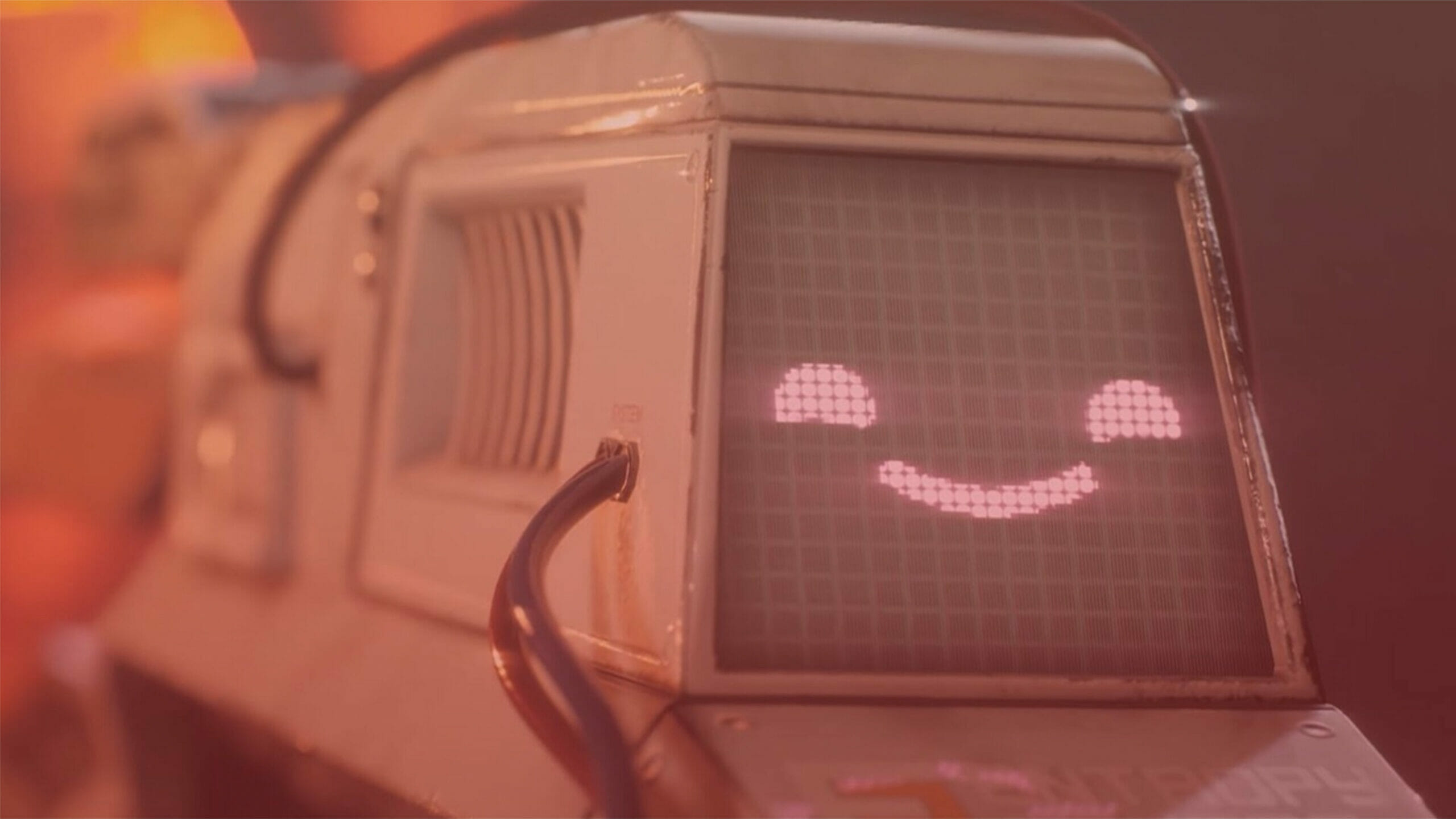Very few games come close to exuding the initial magnificence of Valve’s Portal. Many have tried, and few have succeeded, but none have been able to capture the same ‘vibe’ – for lack of a bette descriptor. At face value, The Entropy Centre looks and feels like a straightforward Portal clone. From its sterile aesthetic through to its clear emphasis on zany puzzle solving – not to mention the special gun, loveable Artificial Intelligence, and female protagonist – attempting to avoid comparing the game to Portal is nigh impossible. Yet The Entropy Centre does so much more than the game it clearly takes inspiration from.
While the Portal influence comes off clear as day, The Entropy Centre does bring about a uniqueness seldom seen in first-person puzzle games. In short: players will not be utilising portals and be forced to think in orange and blue halves in a sterile test environment. Instead, gamers use an energy beam gun to manipulate objects and time inside a seemingly abandoned space station. Stubby Games have clearly not shied away from The Entropy Centre’s passion-filled influence, but they have simultaneously managed to carve out an experience that might just stand the test of time.

The game starts with Aria Adams, an employee of The Entropy Centre, waking up in her room with nothing more than her current status to recall. The game awards players with a special gun fairly early on (since the bulk of the game will be dealt with using it). Portal parallels aside, however, the gun comes with some baggage taking the form of an Artificial Intelligence called Astra – who is loveable, cute and adorable. While the game’s narrative cannot really be spoken about without spoiling some of the more poignant and powerful realisations, it must be said how the story is one of the game’s strongest suites. Thankfully, the game also manages to hit its stride when it comes to gameplay. Particularly, and despite having a dynamic text emote attached to her primary means of puzzle solving, Aria can use the gun to move and/or destroy objects, or to rewind exactly 38 seconds of time on particular objects, or groups of objects; and this is where The Entropy Centre truly shines.
As far as levels are concerned, The Entropy Centre asks players to figure out ways to open, and subsequently get to, the exit door in order to make their way through to the next puzzle. Players are quickly acquainted with which objects they can manipulate, what kinds of mechanics to look out for, and how to traverse the platforming nature of each level. Like Portal, players typically need to use cubes to hold down switches, and the complexity of each level grows substantially with every passing chapter. Unlike Valve’s masterpiece, the primary differentiator in this title comes in the form of the aforementioned rewinding mechanic, which allows the game’s puzzle solving to stand out from the rest.
In the simplest of terms, players will usually need to rewind the same cube they used to flip a switch and open a door, in order to release the switch for the door to close. This kind of “backward” puzzle solving extends throughout the game, requiring players to learn how to make literal ‘Companion Cubes’ of the puzzle cubes they are given at the start of levels. Players need to learn how to activate and/or deactivate a series of switches related to laser panels, bridges or walkways, literal jump pads and hover plates, and much more.

On top of this time travel requirement, players will also have to start taking note of the different kinds of cubes one can utilise. Basic cubes are the most common and most plentiful cubes players will make use of, although others do exist. These come in all forms as well, from one cube creating walking light bridges, through to cubes functioning as jump pads, and even cubes transforming to fit its users’ needs. While puzzles grow increasingly more challenging and complex as players beat every level, the game does a good job at teaching gamers what to look out for. Complex puzzles can, in turn, be solved rather quickly if players take enough time to observe their surroundings. Overthinking is, as a result, one of the most frustrating aspects to deal with, since The Entropy Centre seems to discourage doing so.
Puzzle solving is not the only thing players will be doing either. The gun can also be used to shoot enemy robots littered throughout The Entropy Centre, as well as to dissipate balls of energy that will magnetise to Aria as she progresses through certain levels. Sadly, there are also enemies that cannot be destroyed. These only damage Aria with melee, however, making them a little easier to dodge. When they do hit Aria, or when she falls into water, the game automatically takes players back to set checkpoints that are sometimes not in the most desirable of positions. While many players will go their entire playthroughs without ever being hindered by these systems, the mix between melee bots and faraway checkpoints have disappointed one too many times not to mention.
Outside of puzzle solving and making one’s way through the many levels, the game’s narrative is complemented by outstanding world building and level design. Computers feature cool details and lore, while the levels themselves tell their own little tales of what has transpired. Completing the title takes roughly 12 hours from start to end, which is phenomenal considering its puzzle nature and 15 vast chapters.

The Entropy Centre is truly quite the marvel, especially considering how Stubby Games is a one-man band! Not only does it look and play well, but it is an exceptional puzzle solving experience capable of outlasting all of the very obvious Portal design influences it exudes. The Entropy Centre is worth experiencing from start to finish, and by golly is it a good one.
Verdict:
EXCEPTIONAL
| PROS | CONS |
| Aria and Astra are both masterfully crafted | Checkpoints are sometimes not desirable |
| Wears its Portal influence proudly | Enemies can become annoying |
| Object time rewind function is engrossing |
Title reviewed on Nintendo Switch Lite with code supplied by Playstack.
Review Methodology | Ethics Policy
Junior Editor at Vamers. From Superman to Ironman; Bill Rizer to Sam Fisher and everything in-between, Edward loves it all. He is a Bachelor of Arts student and English Major specialising in Language and Literature. He is an avid writer and casual social networker with a flare for all things tech related.






















